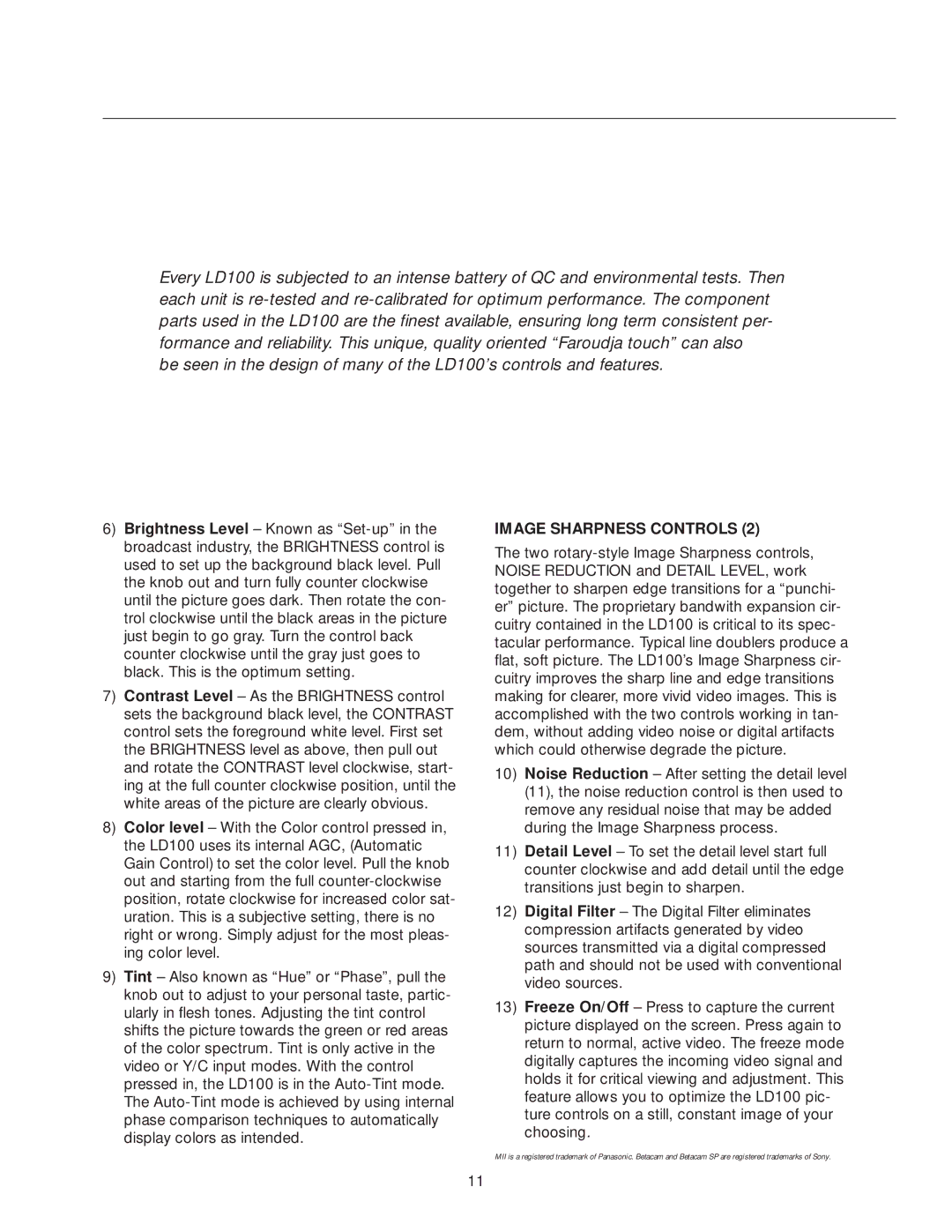Every LD100 is subjected to an intense battery of QC and environmental tests. Then each unit is
be seen in the design of many of the LD100’s controls and features.
6)Brightness Level – Known as
7)Contrast Level – As the BRIGHTNESS control sets the background black level, the CONTRAST control sets the foreground white level. First set the BRIGHTNESS level as above, then pull out and rotate the CONTRAST level clockwise, start- ing at the full counter clockwise position, until the white areas of the picture are clearly obvious.
8)Color level – With the Color control pressed in, the LD100 uses its internal AGC, (Automatic Gain Control) to set the color level. Pull the knob out and starting from the full
9)Tint – Also known as “Hue” or “Phase”, pull the knob out to adjust to your personal taste, partic- ularly in flesh tones. Adjusting the tint control shifts the picture towards the green or red areas of the color spectrum. Tint is only active in the video or Y/C input modes. With the control pressed in, the LD100 is in the
IMAGE SHARPNESS CONTROLS (2)
The two
10)Noise Reduction – After setting the detail level (11), the noise reduction control is then used to remove any residual noise that may be added during the Image Sharpness process.
11)Detail Level – To set the detail level start full counter clockwise and add detail until the edge transitions just begin to sharpen.
12)Digital Filter – The Digital Filter eliminates compression artifacts generated by video sources transmitted via a digital compressed path and should not be used with conventional video sources.
13)Freeze On/Off – Press to capture the current picture displayed on the screen. Press again to return to normal, active video. The freeze mode digitally captures the incoming video signal and holds it for critical viewing and adjustment. This feature allows you to optimize the LD100 pic- ture controls on a still, constant image of your choosing.
MII is a registered trademark of Panasonic. Betacam and Betacam SP are registered trademarks of Sony.
11
